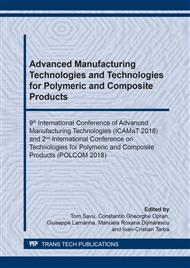p.311
p.319
p.329
p.340
p.348
p.358
p.369
p.379
p.389
Composite Materials Cyberspace Constraints
Abstract:
Industry 4.0 era, as a whole, when economical entities not need to worry only about the classical business issues like natural disasters, asymmetrical competition, loss of key employees, among others, will be faced with increasingly sophisticated cyber threats targeting critical infrastructure as well as the smart devices that we use to control them virtually. Modern technology is prone to vulnerabilities that can be exploiting to get into targeted networks. Any connected system or industrial robot can easily be scanned for vulnerabilities that can be exploited and lead to the production of defective goods. As a paradox of this society, the future of Polymeric and Composites Materials and of related infrastructure will be based on high degree of automation – despite all associated cyber risks. Moreover, the blue efficiency paradigm will be based on increased role of IT and AI tools that will push the cyber risks even further. The paper will address the cyberspace constraints and corresponding solutions applied to Polymeric and Composites Materials paradigm.
Info:
Periodical:
Pages:
348-357
Citation:
Online since:
June 2019
Authors:
Price:
Сopyright:
© 2019 Trans Tech Publications Ltd. All Rights Reserved
Share:
Citation:


